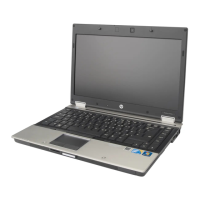
Do you have a question about the HP EliteBook 8440W and is the answer not in the manual?
| Operating temperature (T-T) | 5 - 35 °C |
|---|---|
| Battery capacity | 100 Wh |
| Battery life (max) | 8 h |
| Number of battery cells | 9 |
| HDD speed | 7200 RPM |
| HDD interface | SATA II |
| Optical drive type | DVD Super Multi DL |
| Card reader integrated | Yes |
| Total storage capacity | 320 GB |
| Number of HDDs installed | 1 |
| Motherboard chipset | Intel® QM57 Express |
| Operating system installed | Windows XP Professional |
| Bus type | DMI |
| Stepping | C2 |
| Tjunction | 105 °C |
| Processor cache | 4 MB |
| Processor cores | 2 |
| Processor model | i7-620M |
| System bus rate | 2.5 GT/s |
| Processor family | Intel® Core™ i7 |
| Processor series | Intel Core i7-600 Mobile Series |
| Processor socket | BGA 1288 |
| Processor threads | 4 |
| Processor codename | Arrandale |
| Processing Die size | 81 mm² |
| Processor frequency | 2.66 GHz |
| Processor cache type | Smart Cache |
| Processor lithography | 32 nm |
| Processor manufacturer | Intel |
| PCI Express slots version | 2.0 |
| Processor boost frequency | 3.33 GHz |
| Processor operating modes | 64-bit |
| ECC supported by processor | No |
| PCI Express configurations | 1x16 |
| Thermal Design Power (TDP) | 35 W |
| CPU multiplier (bus/core ratio) | 20 |
| Maximum number of PCI Express lanes | 16 |
| Number of Processing Die Transistors | 382 M |
| Display diagonal | 14 \ |
| Display resolution | 1600 x 900 pixels |
| Native aspect ratio | 16:9 |
| Memory slots | 2x SO-DIMM |
| Internal memory | 4 GB |
| Memory clock speed | 1333 MHz |
| Internal memory type | DDR3-SDRAM |
| Maximum internal memory | - GB |
| Type | PC |
| Modem speed | 56 Kbit/s |
| Graphics card family | NVIDIA |
| Intel segment tagging | Enterprise |
| Compliance industry standards | IEEE 802.3, IEEE 802.3u, IEEE 802.3ab |
| Audio system | HD |
| Pointing device | DualPoint |
| Bluetooth version | 2.1+EDR |
| Cabling technology | 10/100/1000Base-T(X) |
| Networking features | Gigabit Ethernet |
| Charging port type | DC-in jack |
| USB 2.0 ports quantity | 3 |
| CardBus PCMCIA slots quantity | 0 |
| Cable lock slot type | Kensington |
| Sustainability certificates | EPEAT Gold, ENERGY STAR |
| Discrete graphics card model | NVIDIA® Quadro® FX 380M |
| On-board graphics card model | Intel® HD Graphics |
| On-board graphics card base frequency | 500 MHz |
| On-board graphics card dynamic frequency (max) | 766 MHz |
| Processor code | SLBPE |
| Processor ARK ID | 43560 |
| Processor package size | rPGA 37.5x 37.5, BGA 34x28 mm |
| Graphics & IMC lithography | 45 nm |
| Supported instruction sets | SSE4.1/4.2 |
| Intel® Turbo Boost Technology | 1.0 |
| Physical Address Extension (PAE) | 36 bit |
| Country of origin | China |
| Depth | 232.6 mm |
|---|---|
| Width | 335.6 mm |
| Height | 31.3 mm |
| Weight | 2080 g |
Details on Intel Core i5 dual-core and i7 quad-core processors used in the models.
Information on Intel Unified Memory Architecture (UMA) and Nvidia discrete graphics options.
Specifications for DDR3 memory modules and supported system memory configurations.
Details on supported hard drives, solid-state drives, and optical drives.
Description of various ports like USB, DisplayPort, RJ-45, and eSATA/USB.
Information on the keyboard layout, TouchPad, and pointing stick functionality.
Overview of security features including fingerprint sensor and smart card reader.
List of preinstalled operating systems and software configurations.
Guide on how to view installed hardware using Device Manager in Windows.
Illustrations and descriptions of components located on the top of the computer.
Identification of WWAN and WLAN antennas integrated into the display assembly.
Description and function of the power button, display switch, and fingerprint reader.
Explanation of special keys like ESC, FN, Windows logo, and function keys.
Information on the pointing stick, TouchPad, and their associated buttons.
Description of various status lights like wireless, power, battery, and drive activity.
Identification of components on the front, rear, right-side, left-side, and bottom panels.
Locating the serial number and understanding the information on the service tag.
Exploded view showing major internal components of the computer.
Detailed breakdown of parts within the display assembly, like bezels and hinges.
Information and part numbers for modem and Bluetooth module cables.
Details on the plastics kit, including bezels and compartment covers.
Part numbers for hard drives, solid-state drives, and optical drives.
An alphabetical listing of spare part numbers and their corresponding descriptions.
Guidelines for tools, service considerations, drive handling, and ESD protection.
Step-by-step instructions for removing and installing the computer battery.
Procedure for removing and installing the internal hard drive.
Instructions for replacing WLAN and WWAN modules.
Steps for removing and installing expansion and primary memory modules.
Procedure for removing and installing the optical drive.
Instructions for removing and replacing the keyboard and switch cover assembly.
Detailed steps for removing and reinstalling the display assembly.
Procedure for safely removing and installing the CPU.
Instructions for removing and installing the main system board.
How to access and navigate the BIOS setup utility.
Procedure to reset all computer setup settings to their original factory defaults.
Provides an overview of the Computer Setup options available.
Details on options within the File menu, such as System Information.
Configuration settings related to BIOS passwords and security features.
Settings for boot options, device configurations, and AMT options.
General specifications including dimensions, weight, and operating environment.
Detailed technical specifications for the display panel.
Technical details for 500GB, 320GB, and 250GB SATA hard drives.
Technical details for 256GB and 160GB solid-state drives.
Specifications for Blu-ray, DVD±RW, and CD-RW drives.
Information on how to view system resources using Device Manager.
General information on protecting data using Windows Backup and Restore.
How to recover system files and data using built-in Windows tools.
Instructions for recovering the original hard drive image using the f11 key.
Guide to backing up and recovering data in Windows Vista.
Guide to backing up and recovering data in Windows XP.
Pin assignments for audio-out (headphone) and audio-in (microphone) jacks.
Pin assignments for the 1394a (FireWire) port.
Pin assignments for the external VGA monitor port.
Pin assignments for the DisplayPort digital display interface.
Pin assignments for the modem (RJ-11) and network (RJ-45) ports.
Pin assignments for the standard USB port.
Pin assignments for the combined eSATA and USB port.
Requirements applicable to all countries for power cord length, current, and voltage.
Details on accredited agencies and specific cord types for various countries.
Guidelines for safely disposing of used computer batteries.
Disassembly instructions for recycling LCD panel and backlight components.
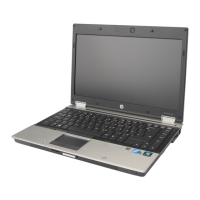
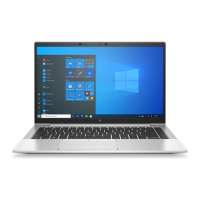
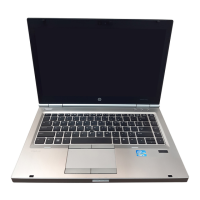
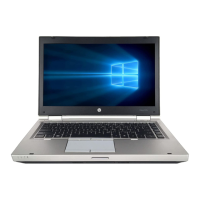
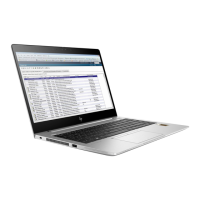
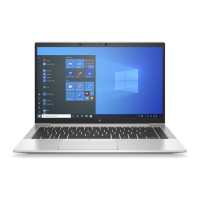
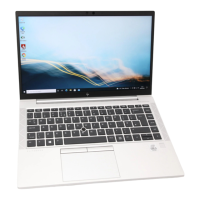

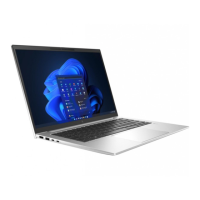
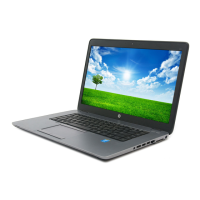
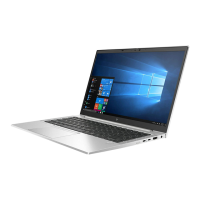
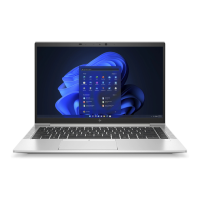
